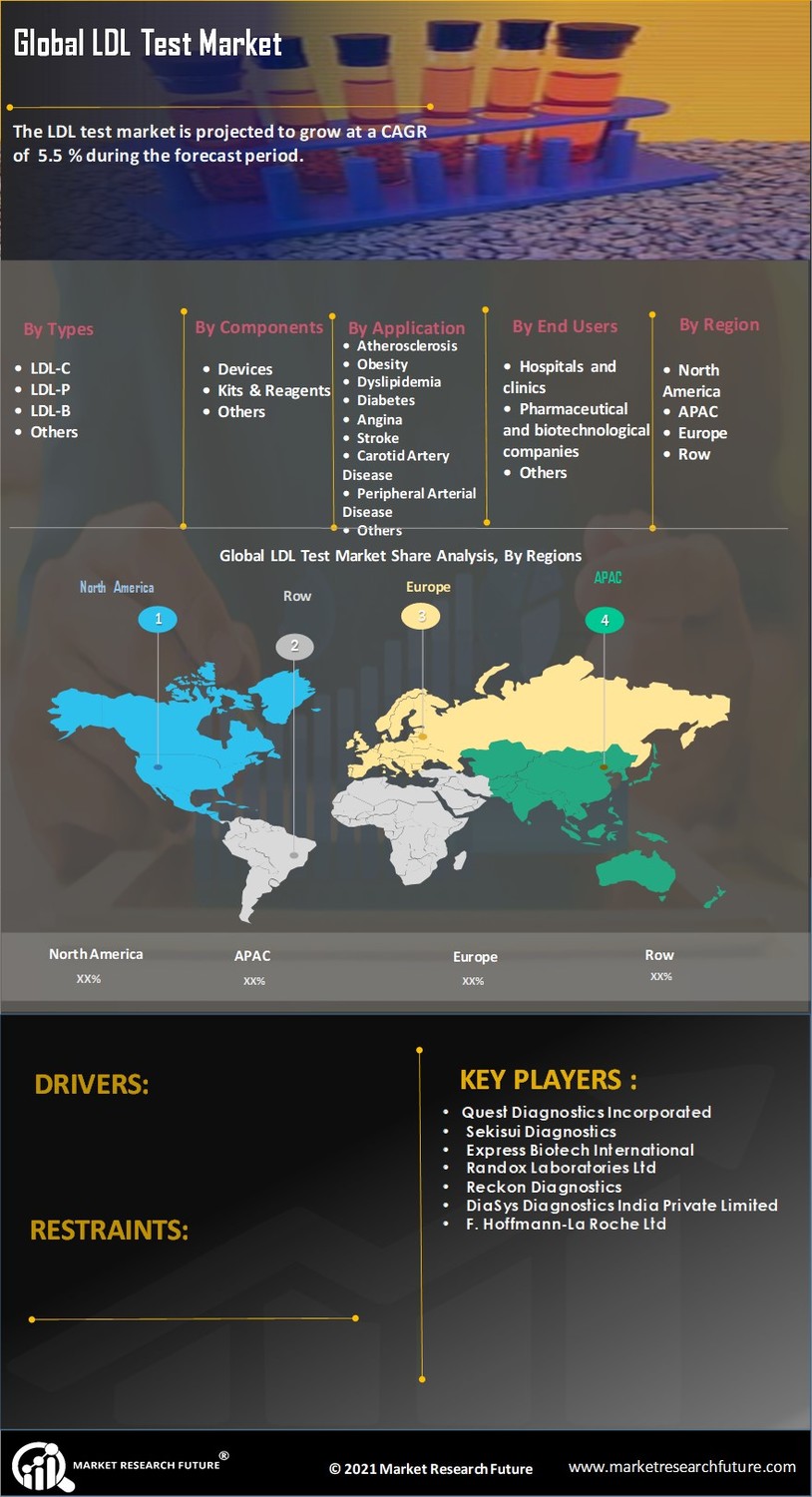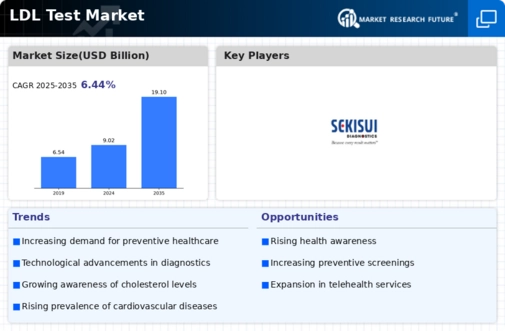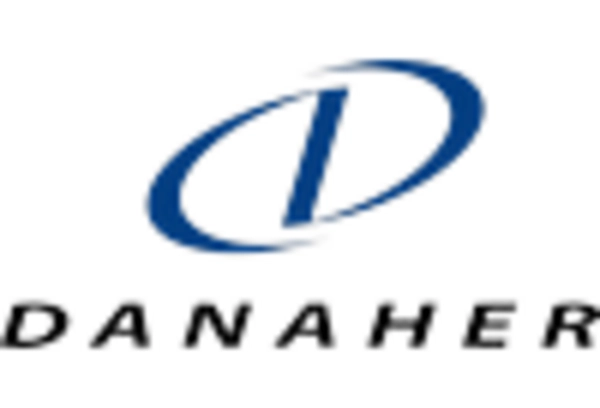Market Growth Projections
The Global LDL Test Market Industry is projected to experience substantial growth over the coming years. With a market value of 9.02 USD Billion in 2024, it is anticipated to reach 19.1 USD Billion by 2035. This growth reflects a compound annual growth rate of 7.07% from 2025 to 2035. The increasing focus on cardiovascular health, advancements in testing technologies, and heightened awareness of preventive healthcare are key factors contributing to this upward trend. As the market evolves, stakeholders are likely to explore innovative solutions to meet the growing demand for LDL testing.
Regulatory Support and Guidelines
Regulatory bodies are playing a crucial role in shaping the Global LDL Test Market Industry through the establishment of guidelines and recommendations for cholesterol testing. Organizations such as the American Heart Association advocate for routine lipid screening, particularly for individuals at risk of cardiovascular diseases. This regulatory support fosters a conducive environment for market growth, as healthcare providers are encouraged to implement regular testing protocols. Consequently, the market is poised for expansion, with the increasing recognition of LDL testing as a vital component of cardiovascular risk assessment.
Aging Population and Lifestyle Changes
The aging population, coupled with changing lifestyle factors, is a significant driver of the Global LDL Test Market Industry. As individuals age, the risk of developing high cholesterol levels and related health issues increases. Additionally, lifestyle changes, such as poor dietary habits and sedentary behavior, contribute to rising LDL levels. This demographic shift necessitates regular monitoring of cholesterol levels, leading to increased demand for LDL testing services. The market's growth trajectory is expected to align with these trends, as healthcare systems adapt to the needs of an aging population.
Growing Awareness of Preventive Healthcare
There is a notable increase in public awareness regarding preventive healthcare, which significantly influences the Global LDL Test Market Industry. Individuals are becoming more proactive about their health, seeking regular screenings to monitor cholesterol levels. This shift towards preventive measures is supported by various health campaigns and educational initiatives. As a result, the market is expected to grow substantially, with projections indicating a rise to 19.1 USD Billion by 2035. The emphasis on early detection and management of dyslipidemia aligns with global health objectives, potentially reducing the burden of cardiovascular diseases.
Rising Prevalence of Cardiovascular Diseases
The increasing incidence of cardiovascular diseases globally drives the demand for LDL tests. As cardiovascular diseases remain a leading cause of mortality, healthcare systems are prioritizing preventive measures. The Global LDL Test Market Industry is witnessing a surge in testing as healthcare providers aim to identify at-risk populations early. For instance, in 2024, the market is projected to reach 9.02 USD Billion, reflecting the urgent need for effective cholesterol management. This trend is likely to continue, as the World Health Organization emphasizes the importance of monitoring lipid profiles to mitigate health risks associated with high LDL levels.
Technological Advancements in Testing Methods
Innovations in testing technologies are transforming the Global LDL Test Market Industry. Advanced diagnostic tools, such as point-of-care testing and home testing kits, are becoming increasingly accessible. These technologies enhance the accuracy and convenience of LDL testing, encouraging more individuals to participate in regular health assessments. The integration of digital health solutions, including mobile applications for tracking cholesterol levels, further supports this trend. As a result, the market is likely to experience a compound annual growth rate of 7.07% from 2025 to 2035, driven by the demand for user-friendly and efficient testing options.

















Leave a Comment